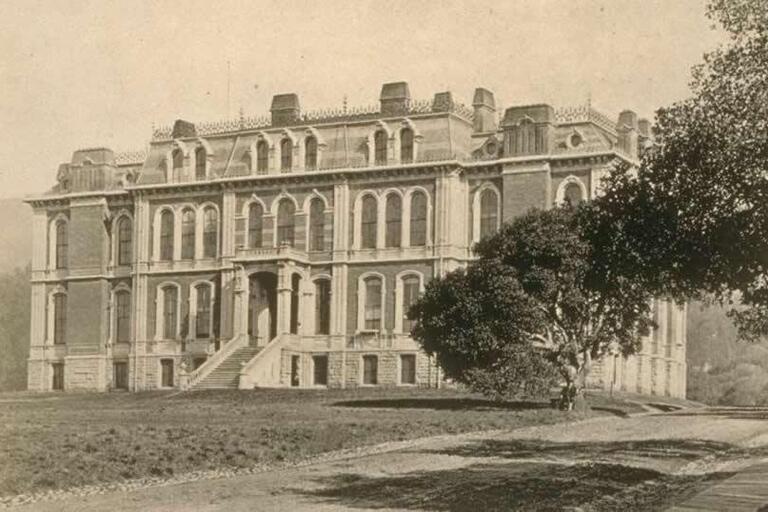
Photo: The Rutherfordium (element 104) discovery team in 1969: (l to r) Matti Nurmia, Jim Harris, Kari Eskola, Glen Seaborg, Pirkko Eskola and Albert Ghiorso.
Dimitri Mendeleev, a Russian chemist who in 1869 wrote out the known elements (of which there were 63 at the time) on cards and then arranged them in columns and rows according to their chemical and physical properties, is considered the father of the Periodic Table. In celebration of the 150th anniversary of this pivotal moment in science, the UN has proclaimed 2019 the International year of the Periodic Table. UNESCO announced in their press release, “The Periodic Table of Chemical Elements is more than just a guide or catalogue of the entire known atoms in the universe; it is essentially a window on the universe, helping to expand our understanding of the world around us.”
But the periodic table did not begin with Mendeleev. Decades before, chemist John Dalton tried to create a table as well as some rather interesting symbols for the elements (they didn’t catch on). And just a few years before Mendeleev sat down with his deck of homemade cards, John Newlandsalso created a table sorting the elements by their properties.
A timeline of discovery of the elements starts with copper around 9,000 BCE. The official recognition of the discovery of Tennessine in 2009 is the most recent.

Newly announced by the IUPAC in 2016, four more elements were added to the table. The Heavy Element Group at Lawrence Livermore National Laboratory along with scientists at Vanderbilt University, Oak Ridge National Laboratory and scientists in Russia and Japan worked on the discovery of newest elements. The elements named nihonium, moscovium, tennessine, and oganesson have been given the atomic numbers 113, 115, 117, and 118 finishing off the seventh row on the Table. This increases the number of elements co-discovered and confirmed by UC Berkeley faculty and alumni to 20.
UC Berkeley faculty have a substantial history of element discovery. In the 1930s, physicist Ernest Lawrence helped establish the Radiation Laboratory (now Lawrence Berkeley National Laboratory) and invented the cyclotron, which won him the Nobel physics prize in 1939. As a result of the discovery, UC Berkeley and Berkeley Lab scientists and researchers, went on to discover 16 chemical elements of the periodic table – more than any other university in the world. In particular the period during World War II and following was a rich time for element discovery at Berkeley.
After College of Chemistry and Nobel Laureate Glenn Seaborg and his team (including Darleane Hoffman) discovered Plutonium, Lawrence's Radiation Laboratory began to contract with the U.S. Army to develop the atomic bomb which became know as the Manhattan Project. UC Berkeley physics professor Robert Oppenheimer was named scientific head of the Project in 1942. As part of the project, Seaborg, Albert Ghiorso, and Stanley Thompson went on to discover Curium, Americium, and Berkelium in the 1940s.
In 1950, Seaborg, Thompson and Ghiorso, discovered another radioactive element which was named Californium. This metallic chemical element has been widely used from being a neutron startup source for nuclear reactors, to the treatment of brain and cervical cancers. Scientists at the Berkeley and Los Alamos Labs went on to discover Einsteinium, Fermium, Mendelevium, Lawrencium, Rutherfordium, and Dubnium. In 1974, element 106, Seaborgium (named for Glenn Seaborg), was officially added.
The story of the Periodic Table is far from over. So many glories of the universe have yet to be revealed. Learn more about the history of the Periodic Table here.

